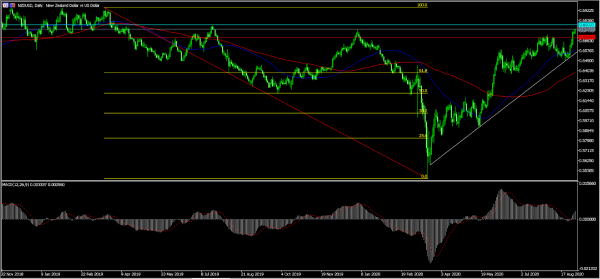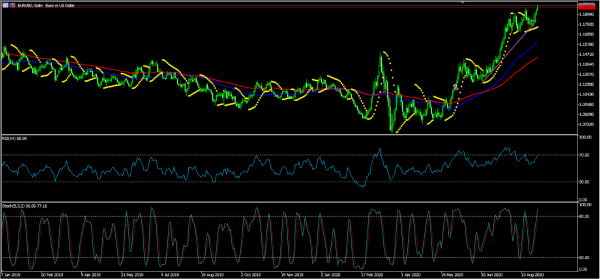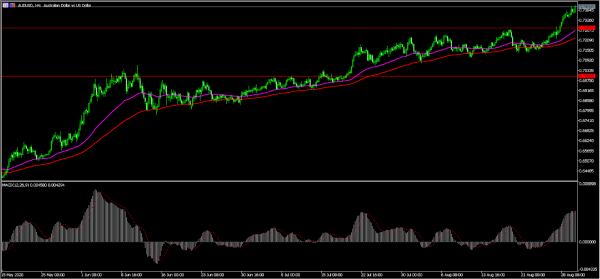The Australian dollar rose in early trading as investors reacted to mixed economic data from the country. According to Markit, the Australian manufacturing PMI dropped from the previous 54.0 to 53.9. This decline was worse than the 53.9 that analysts polled by Reuters were expecting. It was probably because of the second wave of the virus that led to new restrictions in Victoria and Melbourne. Further data showed that building approvals bounced back by 12% in July while the current account rose to $17.7 billion. At the same time, private house approvals increased by 8.5% in July after falling by 5.7% in the previous month.
Global stocks rose in early trading as traders refocused on positive manufacturing PMI data from China. According to Caixin and Markit, the country’s manufacturing PMI expanded to 53.1 in August from the previous 52.8. That was better than the 52.6 increase that analysts were expecting. It was also better than the 51.0 figure that was released by China Logistics yesterday. According to the survey, most companies in China reported increased internal and external orders. Also, output and employment indices improved slightly.
Later today, we will receive the global manufacturing PMI data from Markit. This will include data from Europe and the United States. Other important data will be the preliminary CPI data from the Eurozone. Analysts expect the data to show that inflation was still subdued during the month. They are guided by the relatively weak inflation data from Spain, Italy, and Germany that came out yesterday. From the United States, we will receive important data like construction spending in July and the Redbook. In the UK, the Bank of England will release the July mortgage applications and approval data.
EUR/USD
The EUR/USD pair started the month in the green. The pair rose to an intraday high of 1.1997, which is the highest it has been in a few years. The price is also significantly higher than this year’s low of 1.0636. On the daily chart, the price is significantly higher than all the moving averages and the envelopes pattern. The RSI has moved to the overbought level. The same is true with the momentum indicator and the stochastic oscillator. Therefore, the pair is likely to continue rising now that it has moved above a key consolidation zone.
AUD/USD
The AUD/USD pair rose to an intraday high of 0.7405, which is the highest it has been in months. On the four-hour chart, the price is significantly higher than the short- and medium-term moving averages. Also, the price is above the important resistance level of 0.7280 while the signal and main line of the MACD have moved to the overbought level. Therefore, like the EUR/USD pair, the AUD/USD is likely to continue rising as bulls target the next resistance at 0.7450.
NZD/USD
The NZD/USD pair rose to a high of 0.6760. This price is the highest it has been since July 2019. On the daily chart, the price is above the important resistance level at 0.6757. It is also along the upper line of the Bollinger Bands. Also, the price is above all moving averages and is above the 78.6% Fibonacci retracement level. Therefore, like the EUR/USD, the pair is likely to continue rising as bulls aim for the next resistance at 0.6800.















